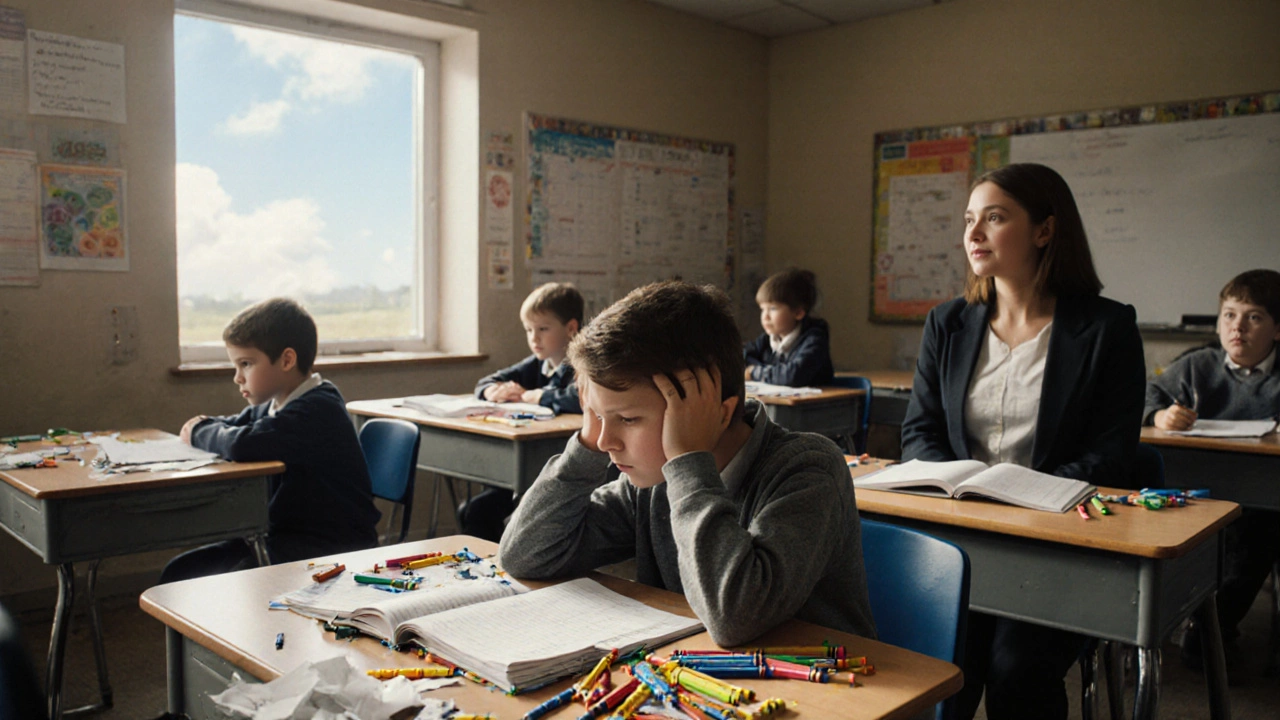Untreated ADHD can trigger academic setbacks, job instability, mental‑health issues, substance abuse, and even legal problems. This guide explains the long‑term risks and offers steps to get help.
Read MoreUntreated ADHD – What Happens When It's Ignored
When dealing with Untreated ADHD, a condition where attention‑deficit hyperactivity disorder goes without medical or behavioral management. Also known as ADHD without treatment, it often drifts into everyday challenges that feel impossible to fix. Untreated ADHD can spark academic setbacks, workplace friction, and growing anxiety, making life feel like a constant uphill battle.
One of the biggest related concepts is ADHD, a neurodevelopmental disorder marked by inattention, hyperactivity, and impulsivity. While the core symptoms stay the same, the lack of intervention magnifies their impact. For example, untreated ADHD frequently leads to poor academic performance, which often triggers low self‑esteem and higher dropout rates. This chain illustrates the triple: Untreated ADHD → academic underperformance → reduced self‑confidence.
Why Mental Health Takes a Hit
Another key entity is mental health, the emotional and psychological well‑being of an individual. Without proper ADHD care, stress hormones stay elevated, increasing the risk of anxiety and depression. In fact, studies from Indian clinics show that adults with untreated ADHD are twice as likely to develop mood disorders. The relationship is clear: untreated ADHD raises stress levels, which in turn erodes mental health.
Medication forms the third pillar. ADHD medication, prescribed stimulants or non‑stimulants that balance brain chemistry, can dramatically reduce impulsivity and improve focus. When medication is absent, the brain’s dopamine pathways remain under‑stimulated, leaving the person stuck in a cycle of distraction. This creates the semantic link: ADHD medication enhances neurochemical balance, which reduces core ADHD symptoms.
Behavioral approaches round out the picture. behavioral therapy, structured counseling that teaches coping strategies and habit formation, equips individuals with tools to navigate daily tasks. Without it, even the best‑tolerated medication may fall short because habits stay chaotic. Here we see: behavioral therapy complements medication, together forming a comprehensive treatment plan.
Beyond the clinical side, everyday life feels the ripple effects. Parents of untreated children often report constant house‑hold tension, while teachers notice frequent classroom disruptions. Adults talk about missed deadlines, strained relationships, and a lingering sense of “not living up to potential.” All these outcomes stem from the root cause: the brain’s executive functions aren’t receiving the support they need.
Fortunately, early recognition can break this chain. Simple screening tools—like the Adult ADHD Self‑Report Scale (ASRS) or school‑based checklists—can flag issues before they snowball. Once identified, a mix of low‑dose medication, CBT‑based behavioral therapy, and lifestyle tweaks (regular exercise, structured routines, balanced diet) can reverse many of the negative trends.
In short, untreated ADHD isn’t just a label; it’s a cascade of avoidable problems that touch education, work, relationships, and overall well‑being. The good news is that with the right mix of medication, therapy, and supportive environments, most people see noticeable improvements within weeks.
Below you’ll find a curated set of articles that dive deeper into each of these angles—whether you’re looking for symptom checklists, treatment options, or real‑world stories of turning things around. Explore the collection to get practical steps you can act on today.





